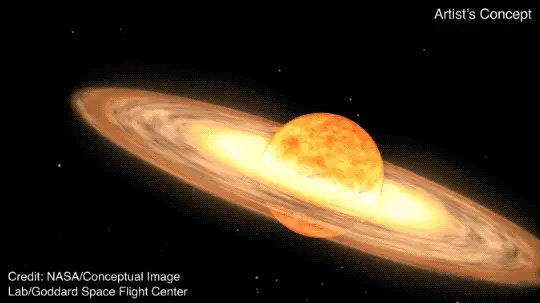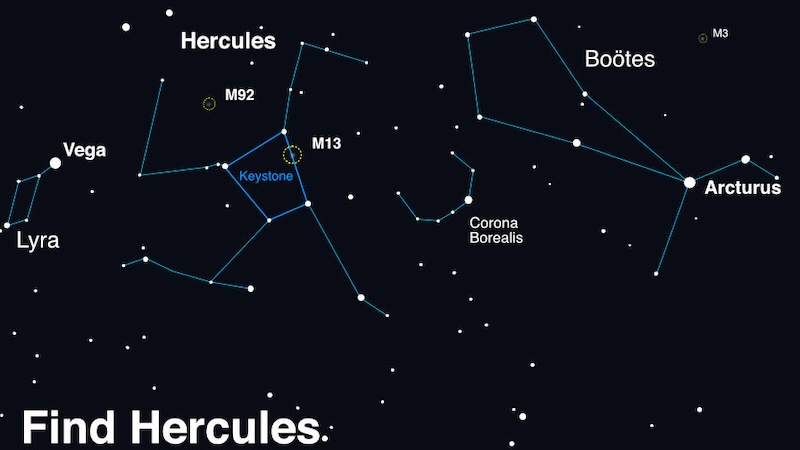[ Skywatchers ] [ Main Menu ]
48318

From: Eve, [DNS_Address]
Subject: Blaze Star expected to go nova soon
URL: https://earthsky.org/space/a-new-star-from-a-nova-outburst-is-expected-soon/
|
--A nova could trigger a new star soon-- T Coronae Borealis, which also has the nickname Blaze Star, lies 3,000 light-years away from Earth. Itís a recurring nova with outbursts about every 80 years. Its last outburst was in 1946, and astronomers believe another will occur sometime between now and September 2024. The star system, normally magnitude +10, is far too dim to see with the unaided eye. After the nova occurs, it will jump to around magnitude +2. Thatís roughly the same brightness as the North Star, Polaris. Once its brightness peaks, it should be visible to the unaided eye for several days and just over a week with binoculars before it dims again, likely for another 80 years. Caption for Image: Artistís concept of a red giant star and white dwarf. A stream of material flows from the red giant to the white dwarf, eventually causing a runaway thermonuclear reaction on the white dwarf that will appear as a new star, or nova, in earthly skies. The constellation Corona Borealis the Northern Crown should have a nova appear sometime between now and September. Image via NASA/ Goddard Space Flight Center. --Corona Borealis is easy to see, in a dark sky-- As we wait for the nova, become familiar with the constellation Corona Borealis, or the Northern Crown. Itís a small, semicircular arc between BoŲtes the Herdsman and Hercules the Strongman. This is where the outburst will appear as a new star. Corona Borealis is visible in the Northern Hemisphere spring and summer (autumn and winter in the Southern Hemisphere). Itís best viewed in the month of July. Youíll find it between two bright stars (Vega and Arcturus) and two larger constellations. Youíll need a dark sky to see it.  Image Caption: Late at night in the spring, and high overhead during summer months, find the bright stars Vega and Arcturus. Then locate the constellations Hercules and BoŲtes. The semicircle of stars between them is the constellation Corona Borealis. Image via NASA. --Recurring novae are rare-- As a matter of fact, this recurring nova is only one of five in our galaxy. This happens because Blaze Star is really two stars. Itís a binary system with a white dwarf and red giant. The stars are close enough that as the red giant becomes unstable from its increasing temperature and pressure and begins ejecting its outer layers, the white dwarf collects that matter onto its surface. The shallow, dense atmosphere of the white dwarf eventually heats enough to cause a runaway thermonuclear reaction, which produces the nova we see from Earth. Bottom line: A recurring nova in Corona Borealis Ė Blaze Star Ė will probably appear as a ďnew starĒ and brighten enough to see with the unaided eye sometime in 2024. (more at link) |
Responses:
[48324]
48324
From: eaamon, [DNS_Address]
Subject: Re: Blaze Star expected to go nova soon
|
I did see one about 4 years ago. this was during the week of the Persides meteor shower. I never did see a write up of it or report it. in a blink it was gone, just like any meteor or particle zipping by. it is too bad they can not do a good prediction of the day and time hope they catch the video of it happening. summer time I lay on my back sculling in my pool and count the satellites while watching for shooting stars. done it for years weather permitting... |
Responses:
None
[ Skywatchers ] [ Main Menu ]